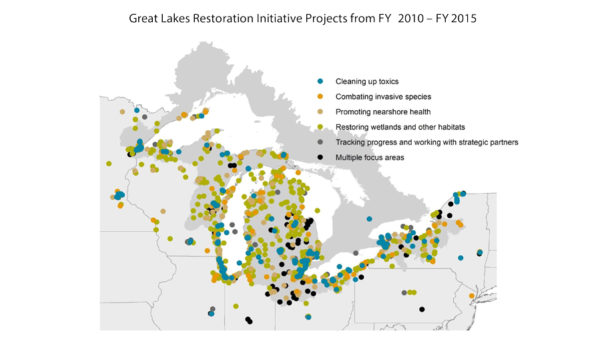If there is such a thing as a winner in climate change, the Great Lakes region is poised to be a desirable alternative to places that have become inhospitable to heat, drought, wildfires, and rising ocean waters. It always was a temperate region, much colder in the north, but only for a few months, and dark winters. The bitter cold appears to be subsiding, but the darkness remains.
Of couse, no region really wins in the climate shock that we’re entering. Except maybe Duluth, Minnesota, which will become a few degrees warmer in the summer and less frigid in the winter. Jesse Keenan, a Harvard urban design and climate adaptation expert , suggests that the city may in fact be “climate proof.” Another snowbound city on the lakes to the far east, Buffalo feels the same. in recent years, Byron Brown, the mayor of Buffalo, New York, declared his city a “climate refuge.”
Cities all along the Third Coast have been emerging from their rusted imagery and cleaning up after the industrialization of the 20th century. Their rivers are no longer burning, and in many cases have been significantly remediated, but the agricultural areas bordering them — particularly along the Maumee River — are still draining nutrients into the water, feeding the algae in the lakes. As the MinnPost.com summarizes, “Today, the Great Lakes themselves and their tributaries are in many ways healthier. Great Lakes Fishery Commission communications director Marc Gaden, who has spent much of his life on or near the Great Lakes, says the changes over the past half century have not been unequivocally positive, “but certainly the trajectory is very encouraging. Instead of viewing the Great Lakes as a repository for pollution, we shifted to thinking of it as a source for clean water, wholesome food and recreation.”
Climate change observers are writing about the migrations to come. Californians are said to be moving to Arizona and other Western states to escape the wildfires in their drought-suffere coast. Just as the gold rush of the 1800s drover Easterners to California, followed by the golden sun and surf of the 1960s, people may see the writing on the wall and are looking to migrate. Some have already found cities like Milwaukee, Detroit, and Cleveland attractive becuase costs are low and post-industrial urban spaces are cool. There isn’t the mountains, but there is plenty of space and, of course, a long coastline.
The winters are predicted to be warmer, the springs wetter, and the summers drier. There will be freak, devasting storms, both in winter and summer. The lakes are not rising, but unless we have the kind of rainfall we had last year, the loss of ice cover threatens the lake levels. But they’re not going to dry up any time soon.
Whether it’s water to drink, to cool manufacturing facilities, or to swim in, there’s a lot more here than in China, for example, according to a report published in The Guardian.
Water is now known as “blue gold” and the worldwide water industry is expected to become a trillion-dollar-a-year operation within a decade. Few countries will not not need to invest many billions of dollars over the next 20 years to improve their water and waste services while addressing water shortages. People will look to sources of water and climate stability. Many will look to the freshwater coast of North America.
Post written by Dennis Archambault
Map source: Great Lakes Restoration Initiative
